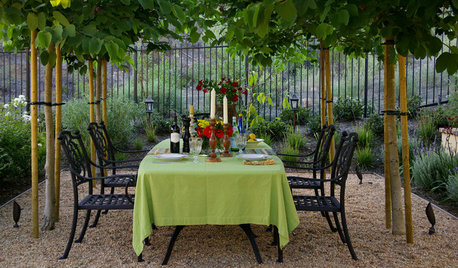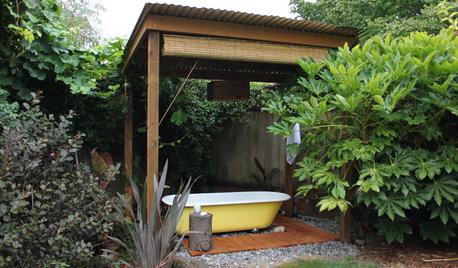I've been away for a year or so, but was researching the potential of the Pickering Four Seasons as a seed parent (is it really D'Esquermes like Leonie Bell thought?), and found a post by AquaEyes about attempting to breed pure (chinensis-free) Portlands.
Although I'm doing some of the exact same thing, I'm also working hard on breeding stock, since most of what was used in the 18th and 19th centuries is now extinct, and nearly everything since then has chinensis in it. Example: the single centifolia is extinct in unmossed form, and extremely rare in mossed form. No other centifolias, mossed or otherwise, from prior to 1850, have much hope of bearing seed in any quantity. They're too double to have room for actual reproductive organs. The breeding stock was rarely shared with anyone, since that might help competitors, and the market for single roses is relatively small.
If all I'd ever want to breed was Portlands, I could just use the Portland Rose and/or Pickering Four Seasons as seed parents, and be done with it, since (if Pickering = D'Esquermes) both have good track records. But, assuming I live long enough, I'd like to go beyond that, and Portlandize some good seed bearers for making potentially remontant Centifolias, Agathes, Provences and Albas. These are roses which I think really *should* have existed, and would have, had they not been preempted by the chinensis craze.
I don't know that I'll ever be able to grow a really special garden rose, but if nothing else, I hope that I might make breeding stock that others can use to keep the old European lines alive.
(I grow and like chinensis roses too, but they have several copies of their fragrance genes, which significantly change the scent palette of anything European they're crossed with. Avoiding them is feasible, while breeding them back out probably isn't.)
Relevant to this undertaking, I currently have hips on the following:
The Portland Rose
Celsiana
Tuscany Superb
Alika
Complicata
Next year I will add these to the seed parent mix:
Pickering Four Seasons
Henri Martin (with caution; can't yet rule out chinensis content)
Agatha (francofurtana)
Mme Plantier
La Belle Sultane
R. pendulina
R. macrantha
I'm desperately looking for Single Moss, as I think that if Portlandized, it would be the best combination I could hope to pull off quickly. One could go in almost any direction with that.
My only concern is that this could take the rest of my life, and then end up unshared and wasted. Collaboration with any like-minded people seems like it would offer a lot of benefits, and since I don't entertain any notions about making money with roses, I see no disadvantages to doing so.
If this sort of thing appeals to you, please drop me a line, and maybe we can start a Portland breeder's conspiracy. (You may have to change your settings to allow me to reply.)

















nastarana
fogrose
Related Professionals
Wixom Landscape Architects & Landscape Designers · Harvey Landscape Architects & Landscape Designers · Clermont Landscape Contractors · Addison Landscape Contractors · Lancaster Landscape Contractors · Middletown Landscape Contractors · Pikesville Landscape Contractors · Vadnais Heights Landscape Contractors · Cooper City Swimming Pool Builders · Elk Grove Swimming Pool Builders · Colorado Springs Siding & Exteriors · Five Forks Siding & Exteriors · Manassas Siding & Exteriors · New Port Richey East Siding & Exteriors · St. Louis Siding & Exteriorsportlandmysteryrose
portlandmysteryrose
ffffOriginal Author
Tessiess, SoCal Inland, 9b, 1272' elev
AquaEyes 7a NJ
AquaEyes 7a NJ
AquaEyes 7a NJ
jeannie2009
sandandsun
User
loveandpeace
AquaEyes 7a NJ
User
AquaEyes 7a NJ
mad_gallica (z5 Eastern NY)
AquaEyes 7a NJ
AquaEyes 7a NJ
roseseek
mad_gallica (z5 Eastern NY)
AquaEyes 7a NJ
ffffOriginal Author
AquaEyes 7a NJ
User
roseseek
ffffOriginal Author
AquaEyes 7a NJ
ffffOriginal Author
portlandmysteryrose
ffffOriginal Author
portlandmysteryrose
ffffOriginal Author
AquaEyes 7a NJ
roseseek
Dar Sunset Zone 18
AquaEyes 7a NJ
ffffOriginal Author
AquaEyes 7a NJ
ffffOriginal Author
AquaEyes 7a NJ
luxrosa